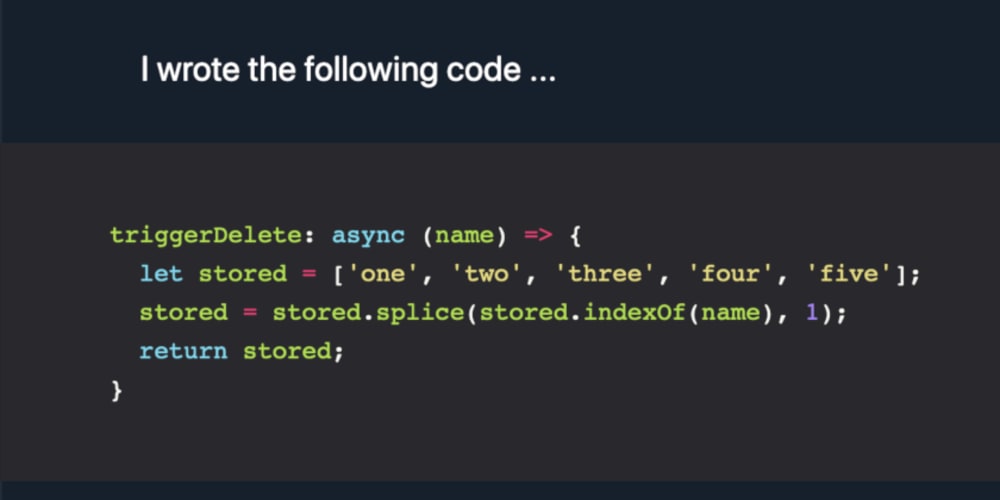

JavaScript API has provided indexOf a method to find the element's index in the array.

What if we want to delete an item and don't know where the element is located in the array? How can we find the index of it? In this example, we remove one item from the index 2. The splice() method takes two arguments: the index of the item to remove and the number of items to remove. const array = Ĭonst indexToRemove = 2 // index of item to removeĬonsole.log(array) // Output: The following array variable holds an array of 5 elements. The splice() method operates directly on the array and returns the modified array. It can be used to change the contents of an array by removing or replacing existing elements or by adding new elements in their place. The splice() method is a built-in function in JavaScript that allows you to modify an array by adding, removing, or replacing elements. Let us take a look at each of them.ĭifferent ways to remove an item from the array Using splice() ( ✅ Recommended ) There are different ways to remove a specific item from an array in JavaScript. Following are various ways we can remove an element from an array. We must write some logic to remove/delete the element from the array. You can run this snippet directly on google chrome developer tools under the sources tab, create a snippet, and you are good to run JavaScript snippets directly on the browser.įor example, to remove an element at the index 2, which is the item 30. Let us assume we have some items in the array as follows: const array = Ĭonsole.log(array) // In JavaScript, removing an item from an array can be done in several ways. If it isn't, use the one you find easiest to read.The most common use case a Javascript or frontend developer runs into is "removing an item from an array".

If it is, then do a benchmark for it using the engine that will be running the script, and use the most performant method.If it occurs only once, ask yourself question 2:.

Js splice remove element free#
It has pretty clear documentation about the differences, so feel free to use it if it helps you at all. For clarity, I've written a little gist that shows overloads of both options side-by-side. Here is the line from filter's documentation that explains it:įilter() calls a provided callback function once for each element inĪnd as chrystian said, filter also returns a new array, whereas splice modifies the array it was called on. The second method you asked about using filter, will remove every reference to myobject in this.myArray, in the case that you have multiple references to it in the array. The indexOf() method returns the first index at which a given element can be found The first method you wrote, using indexOf, will only splice the first reference to myobject in this.myArray, as it says in the documentation, There are several answers regarding performance, but there is another difference that wasn't explicitly mentioned between the two methods you are asking about:


 0 kommentar(er)
0 kommentar(er)
